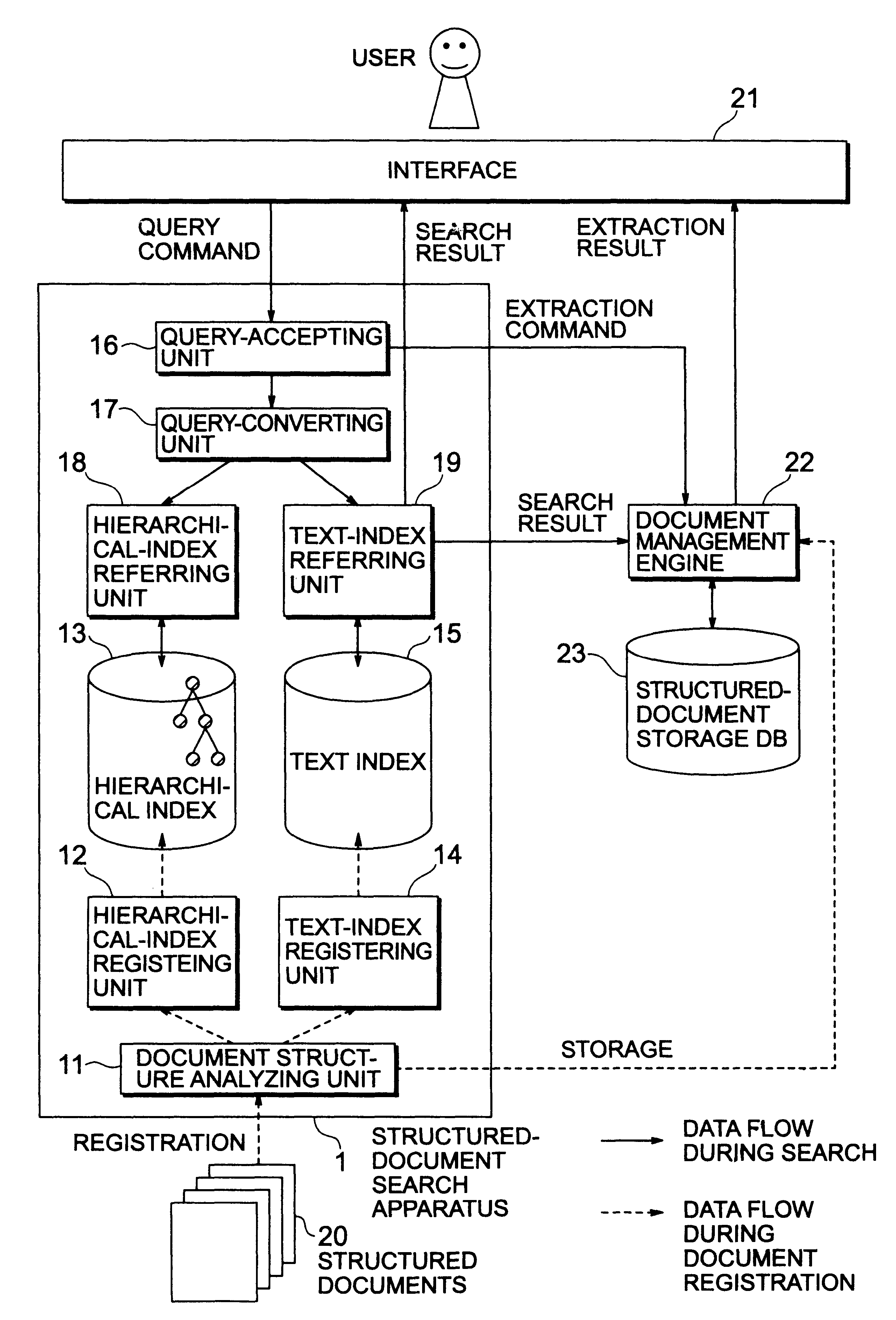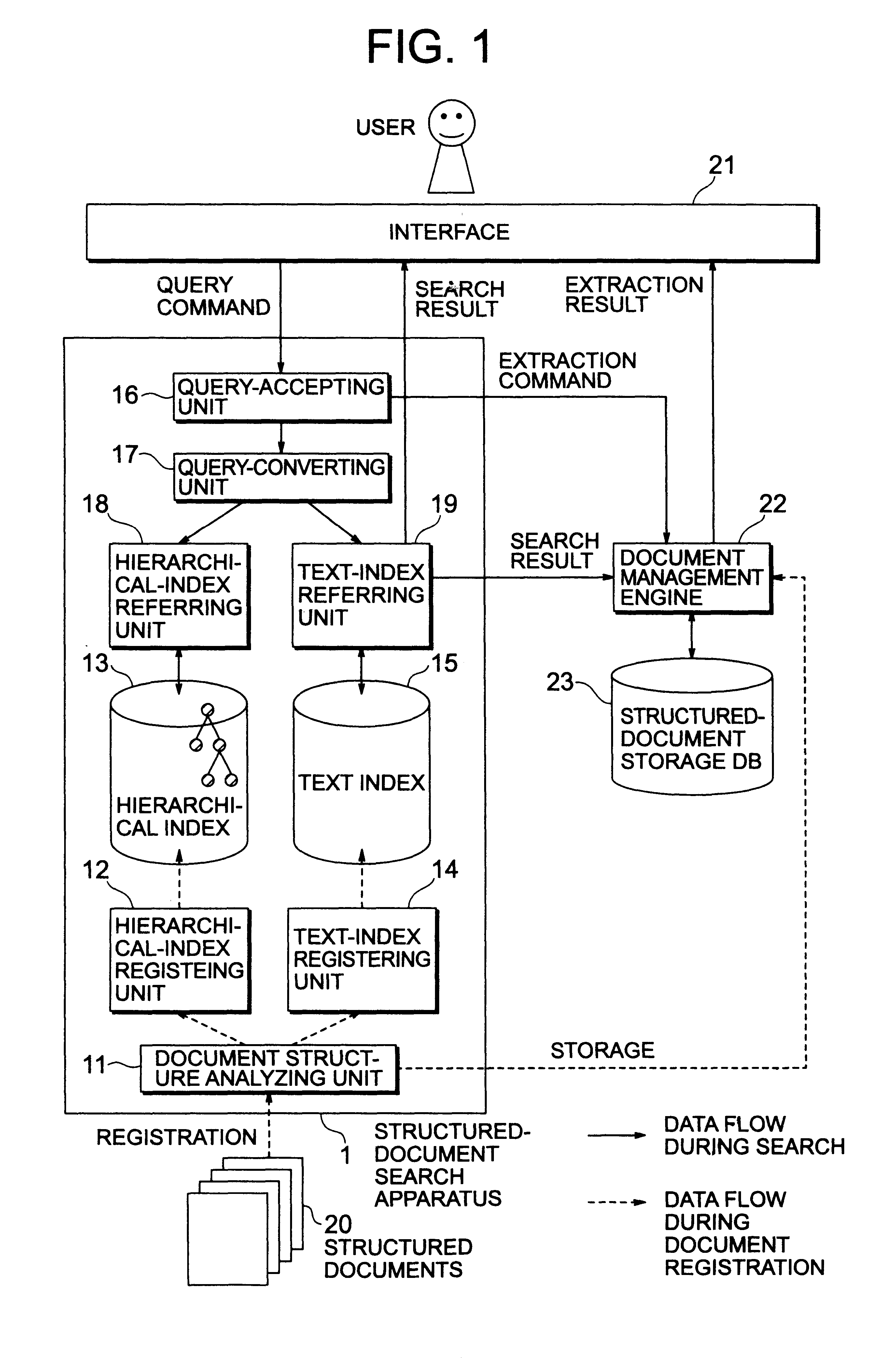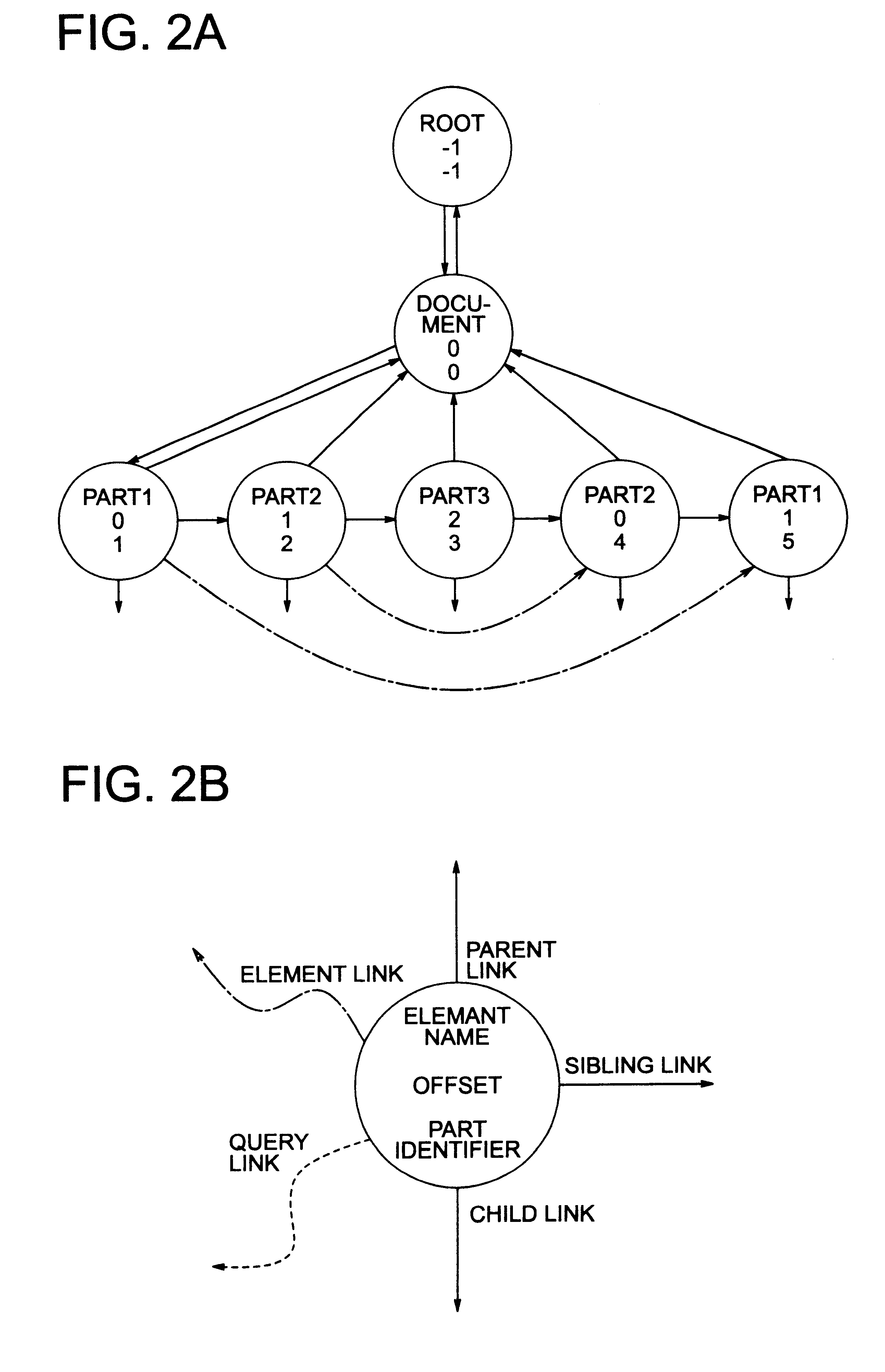Structured-document search apparatus and method, recording medium storing structured-document searching program, and method of creating indexes for searching structured documents
a structured document and search apparatus technology, applied in the field of structured document search apparatus, can solve the problems of not allowing a user to include in search conditions a hierarchical relationship between document parts, document parts which do not conform to the schema, and cannot be processed for search requests with designation of document structures. the effect of speed
- Summary
- Abstract
- Description
- Claims
- Application Information
AI Technical Summary
Benefits of technology
Problems solved by technology
Method used
Image
Examples
example 1
Next, an example in relation to documents having simple structures will be described. Documents 1 and 2, which were like those used in the “Description of the Related Art” section, are used here.
· Document 1<Document><Part1>< / Part1><Part2>< / Part2><Part3>< / Part3>< / Document>· Document 2<Document><Part2>< / Part2><Part1>< / Part1><Part3>< / Part3>< / Document>
The example shows documents 1 and 2 which include the Chinese (or Kanji) character, which is ideogram, more concretely shows Japanese documents 1 and 2. In the example, the word or the characters “” corresponds to the word “structuring”, the word or the characters “” to the word “document”, and the word or the characters “” to the word “retrieval”. That is, the above example is a Japanese one used in the “Description of the Related Art” section. Since the Chinese character is a ideogram, two continuous Chinese characters “” has the same meaning with the word “...
example processing
for search of documents having simple structures will be described below. The following five search requests; i.e., Search Request 1 to Search Request #5, are taken as examples.
Search Request 1
In Search Request 1, a document including “Part1” as a document part is searched. An internal operation for converting Search Request 1 to a Boolean expression will be described with reference to FIGS. 15A, 15B, and 16.1) The query tree is formed of a single node; and, in the node of the query tree, “Part1” is stored as an element name, and “??” is stored as a text-data matching condition (see FIG. 15A).2) Through the processing shown in FIG. 10, temporary nodes are attached to the nodes of “Part1” in the hierarchical index. Further, the query links of the nodes to which temporary nodes have been attached are linked to the node of the query tree (see FIG. 15B).3) Since the query tree for Search Request 1 fail to satisfy the conditions of the processing in step S77 shown in FIG. 10, there is cr...
example 2
Next, processing for conversion into a Boolean expression of a query tree including designation of a multi-level sibling relationship will be described. Even when documents having more complex structures are processed, the fundamental processing is the same as in the above-described case in which documents having simple structures are processed. Only the structure of the hierarchical index and the internal operation for conversion of a query tree to a Boolean expression become complex. An embodiment for documents having complex structures will be described with reference to an example case in which the following three documents (Document 1, Document 2, and Document 3) are processed.
· Document 1<Document><Title> STRUCTURED-DOCUMENT SEARCH < / Title><Author><Name> YAMADA TARO < / NAME><Section> SHIBUYA RESEARCH CENTER < / Section>< / Author>< / Document>· Document 2<Document><Title> FULL-TEXT SEARCH ENGINE < / Title><Author>&#x...
PUM
 Login to View More
Login to View More Abstract
Description
Claims
Application Information
 Login to View More
Login to View More - R&D
- Intellectual Property
- Life Sciences
- Materials
- Tech Scout
- Unparalleled Data Quality
- Higher Quality Content
- 60% Fewer Hallucinations
Browse by: Latest US Patents, China's latest patents, Technical Efficacy Thesaurus, Application Domain, Technology Topic, Popular Technical Reports.
© 2025 PatSnap. All rights reserved.Legal|Privacy policy|Modern Slavery Act Transparency Statement|Sitemap|About US| Contact US: help@patsnap.com



